Although California wildflowers are alarmingly threatened in their natural habitats, a number of them perform beautifully — if quirkily — in home gardens. In fact, the wildflower that's easiest to grow is also the best known and the most in-your-face gorgeous: the California poppy
, either in its shimmering, golden natural form (first photo) or numerous "improved" types. In your garden you can plant California poppies for your own spring wildflower hill or as blasts of color in a naturalistic border. Just remember that poppies and their wild ilk have a relatively short season and then look pretty shabby as they dry up — not the best appearance for a formal dress-up situation. The time to plant poppies varies by climate. In mild areas such as California, emulate nature by planting seeds in fall and relying on winter rains to take over; in colder climates set out seedlings or sow seeds in spring.
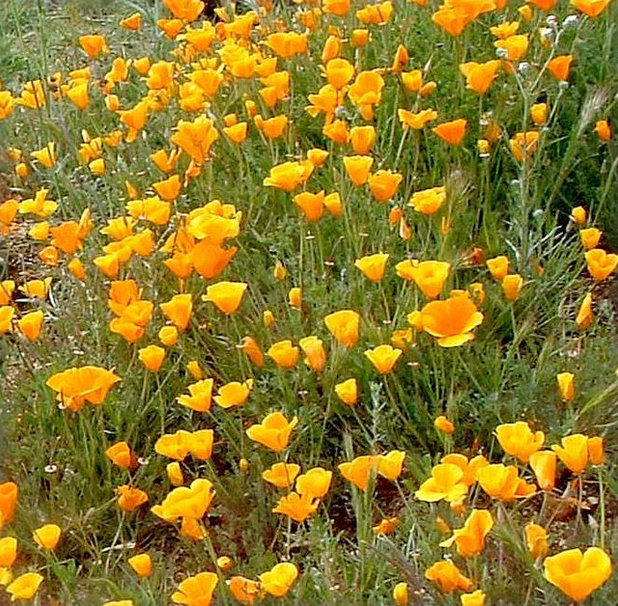
Las Pilitas Nursery
Botanical name: Eschscholzia californica
Common name: California poppy
USDA zones: All zones when planted in spring as a spring and summer annual. In mild climates seeds can be sown in fall.
Water requirement: Light to moderate
Light requirement: Full sun — most definitely!
Mature size: 12 inches tall and 18 inches wide
Caution: It naturalizes (reseeds and spreads) readily under favorable conditions and can become pesky if you don't want it there.
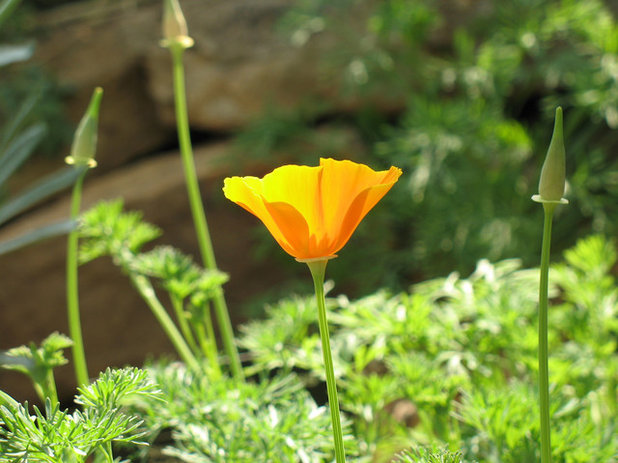
Missouri Botanical Garden
Distinguishing characteristics. Bright orange blossoms, produced in abundance, are the most common form of California poppy. The foliage is lacy, blue-green, pretty when young but weedy and dry as the plants go to seed.
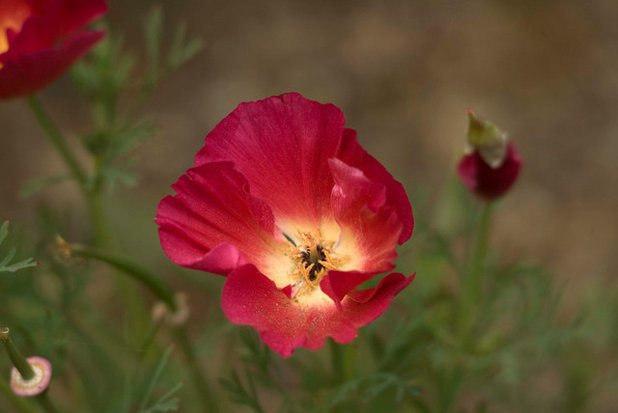
The New York Botanical Garden
'Apricot Chiffon', shown here, is one of many color variations (including white, red and streaked). Different flower forms (frilly, fluted and more) are also available. Many variations were developed in England, such as 'Mahogany Red'. You can buy seeds of mixed colors or single colors. For the best selection, try specialty wildflower seed suppliers such as Larner of Bolinas, California.
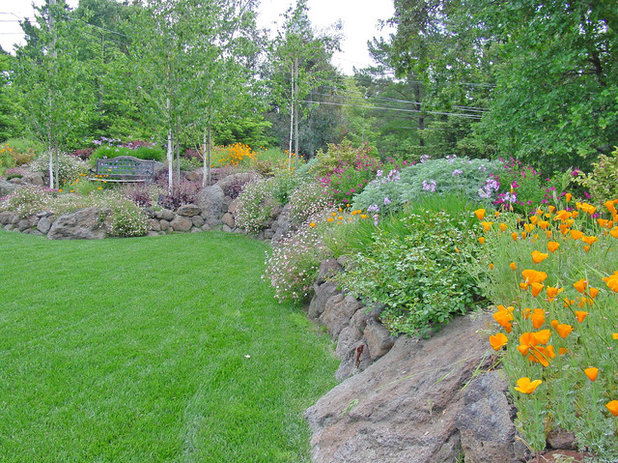
Alder Group, Pool and Landscape Co.
How to grow it. In cold climates sow seeds or set out seedlings in spring. In California and similar mild climates, sow seeds in fall and hope that winter rains see them through. First cultivate the planting bed, or at least scuff the planting area with a rough rake. Broadcast seeds and cover them with mulch or loose soil. Sprinkle the soil with water and keep it moist until the rains take over. After bloom, pull or hoe out dry plants — unless you want the poppies to naturalize and come back next year. Their seeds may come back if conditions suit them; pull or hoe out emerging seedlings if you don't want them.
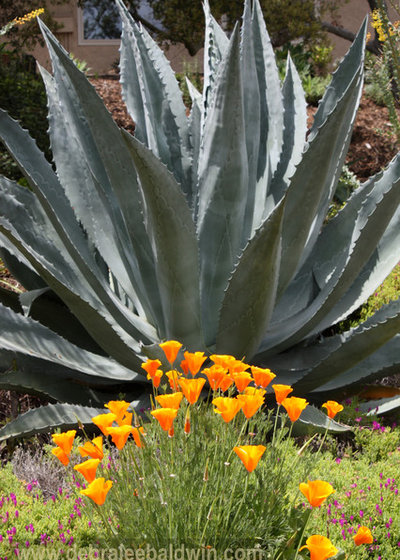
Debra Lee Baldwin
How to use it. Combine just a few California poppies with natural companions, such as agave (shown), to create wish-you-were-here postcard scenes — on a sunny slope, in a parking strip or in a country style mixed border. Other compatible companions include wildflowers such as lupines (as in the blue and gold of California's spring hills), globe gilia and baby blue eyes.
As a rule, California poppy is not best for formal, highly groomed garden situations that you see up close. Its postbloom appearance is on the weedy side.
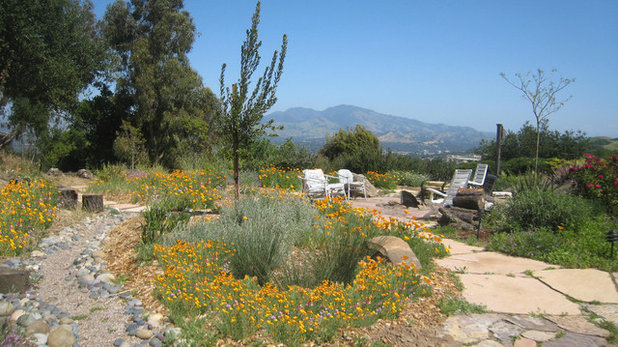
Golden Associates, Landscape Architects
A ring of California poppies brightens this dry-style planting bed between a flagstone terrace and a stone path. In a somewhat domesticated situation such as this, you'd probably want to tidy up the postbloom appearance; remove the drying-up plants after bloom.
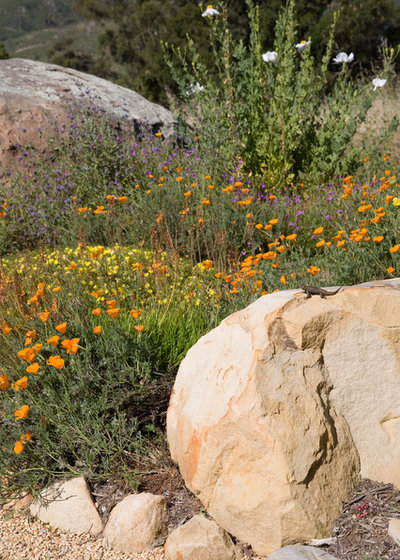
Margie Grace - Grace Design Associates
A slice of wild California is created here, with California poppies scattered among natural stones, cracks and all. In the background is the vigorous and attention-getting Matilija poppy (fried-egg plant), another California icon that can sometimes get out of hand.
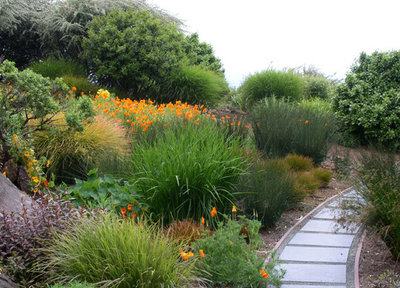
Blasen Landscape Architecture
California poppies are so vivid that it takes just a few plants to brighten up a mixed border. Here one poppy plant in the foreground visually links nicely with a larger patch of poppies in the background.
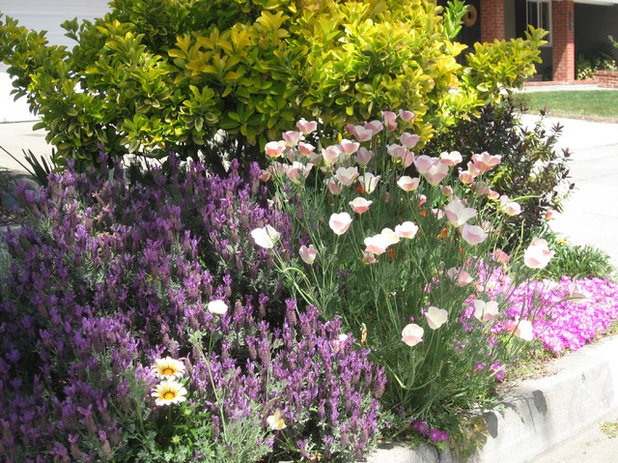
KL Designs Residential Landscape Planning LLC
An unconventionally colored pink California poppy looks very much at home with other dry-loving plants such as lavender in bloom.





